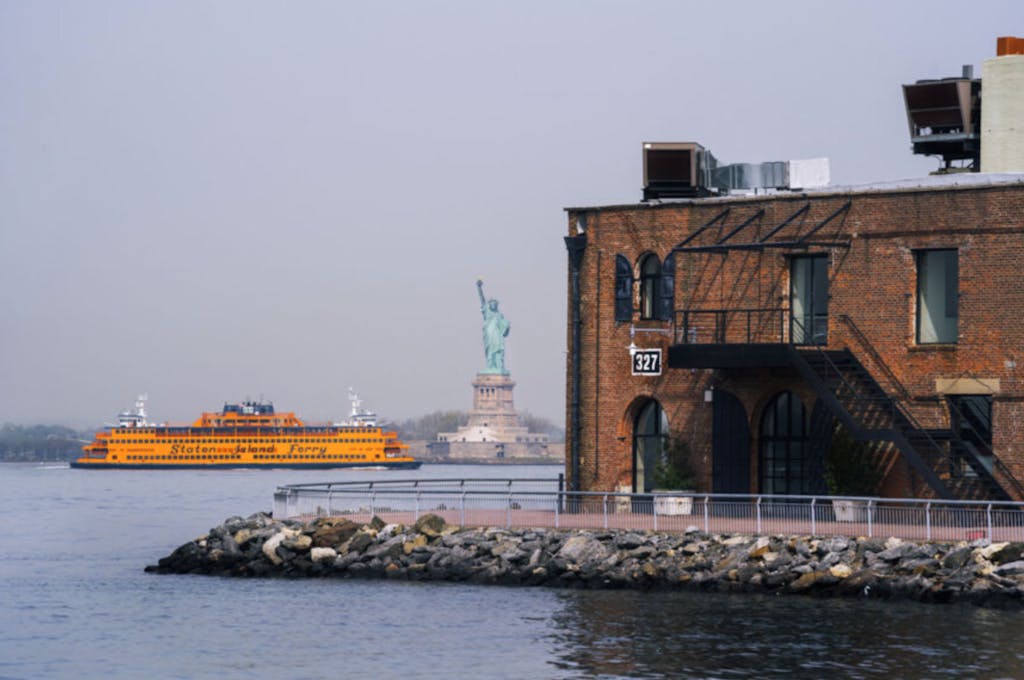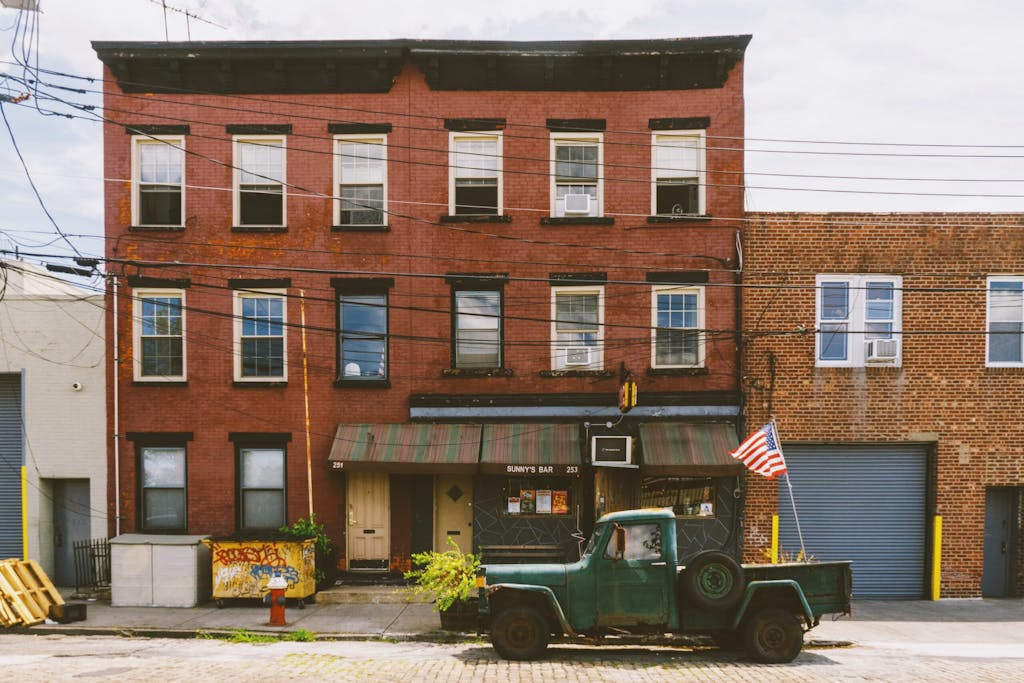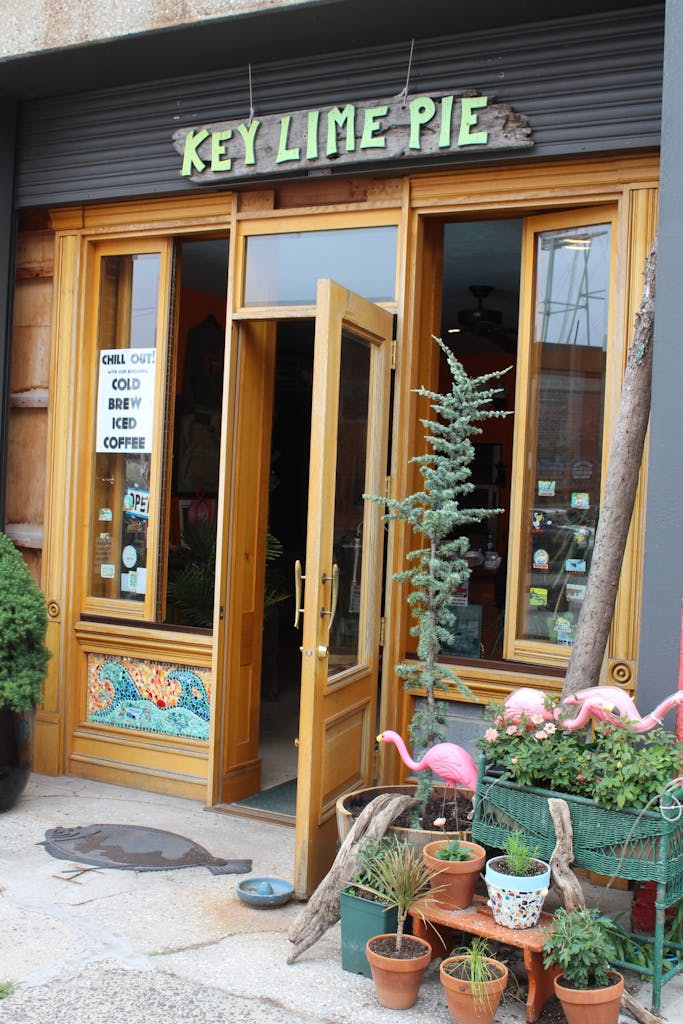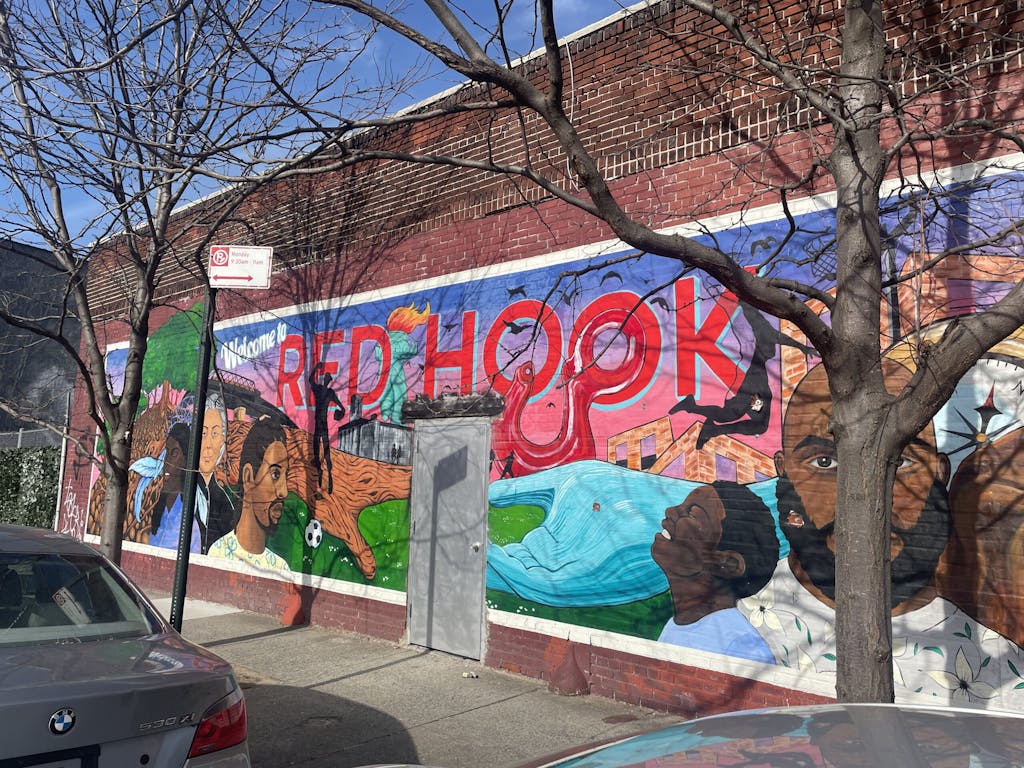Get To Know Red Hook, Brooklyn – One of NYC’s Most Unique Neighborhoods

Red Hook is located on a peninsula in southwestern Brooklyn and is known for its diverse community, rich history, and unique geography. It’s one of the only places in Brooklyn with a clear view of the Statue of Liberty. In fact, Red Hook offers the only frontal views of the Statue of Liberty in NYC. From various points in Red Hook, visitors have access to the only front-facing views of the Statue of Liberty in New York City. The neighborhood is bordered by the Upper New York Bay to the south and west, and by the Gowanus Canal to the east.

Two places to view the Statue of Liberty in Red Hook:
Pier 44 Waterfront Garden – a true hidden gem, not easily found on a map. The park is also home to the incredibly unique Waterfront Museum, which is housed on a 1914 barge. For an easier option, join us on our Red Hook Tour. We take you to nearby Steve’s Authentic Key Lime Pies and the Red Hook Winery, both near the park with excellent views and delicious and fun stops as well!
What was once a waterfront shipping yard, is now home to the beautiful Louis Valentino, Jr. Park and Pier. Named after a neighborhood firefighter and lifeguard, the park offers a unique view of Lady Liberty as you can see it straight on, rather than from the side (like with most other locations). Along with the Statue of Liberty, you can see Governors Island, the Manhattan Skyline, and Staten Island.

Red Hook, Brooklyn is unique for several reasons:
- Location: Red Hook is located on a peninsula in Brooklyn and has a distinct geography that sets it apart from the rest of the borough.
- History: Red Hook has a rich history, including its role as a major port during the 19th and early 20th centuries and its connection to the Civil War.
- Diversity: Red Hook is a culturally diverse neighborhood, with a mix of residential and industrial areas, that is home to a variety of ethnic groups.
- Arts and Culture: Red Hook is known for its vibrant arts and culture scene, with numerous galleries, performance spaces, and festivals that showcase local talent.
- Waterfront: Red Hook’s location on the water provides ample opportunities for water-based recreation, including boating and fishing, as well as stunning views of the harbor and Statue of Liberty.

The history of Red Hook, Brooklyn dates back to the 1600s when it was an important shipping and transportation center. During the 19th century, Red Hook was a major port and was known for its thriving commercial and industrial activity. It was a center of shipbuilding, and was also an important hub for trade, including the export of goods like coffee, sugar, and molasses.
In the late 19th and early 20th centuries, Red Hook became a major center of immigration, attracting large numbers of Irish, Italian, and Scandinavian immigrants. These communities brought a rich cultural heritage to the neighborhood and helped to shape its character.
During the mid-20th century, Red Hook experienced a period of decline, as shipping and industry moved elsewhere and the neighborhood suffered from economic hardship and crime. However, in recent years, Red Hook has undergone a resurgence, with a growing arts and culture scene, and a renewed focus on community development and revitalization.
Today, Red Hook is a vibrant and diverse neighborhood, known for its rich history, unique geography, and cultural heritage.

Hurricane Sandy, which struck the New York City area in 2012, had a significant impact on Red Hook, Brooklyn. The neighborhood is located on a low-lying peninsula and is surrounded by water on three sides, making it vulnerable to flooding and storm surges.
During Hurricane Sandy, Red Hook experienced significant flooding, with many homes and businesses being inundated with water. The neighborhood was without power for several days, and many residents were forced to evacuate. The flooding caused significant damage to the infrastructure, including roads, bridges, and the electrical grid.
In the aftermath of Hurricane Sandy, Red Hook has been working to recover and rebuild. The community has been working to improve its resilience to future storms, with measures like flood walls, elevated parkland, and improved drainage systems. Red Hook has also been the recipient of significant funding from the government and non-profit organizations to help support its recovery efforts. Today, the neighborhood is working to regain its footing, with a growing arts and cultural scene, and a renewed focus on community development and revitalization.
The origin of the name “Red Hook” is not certain, but there are several theories about its origins. One theory is that the name comes from the red clay soil in the area, which was used by early Dutch settlers to make bricks. Another theory is that the name refers to the red color of the land when viewed from the water, due to the high iron content of the soil.
A third theory is that the name is derived from the Dutch word “rood hoek,” which means “red point” or “red corner.” This theory suggests that the name refers to the red clay cliffs that once surrounded the area and that the cliffs were used as a navigational aid for ships entering the harbor.
Regardless of its origin, the name “Red Hook” has been associated with the neighborhood for centuries, and has become a symbol of its unique history and character.
Don’t miss our excellent tour of Red Hook Brooklyn for an inside look (plus amazing stops including wine, whiskey, BBQ and more!). RED HOOK TOUR
